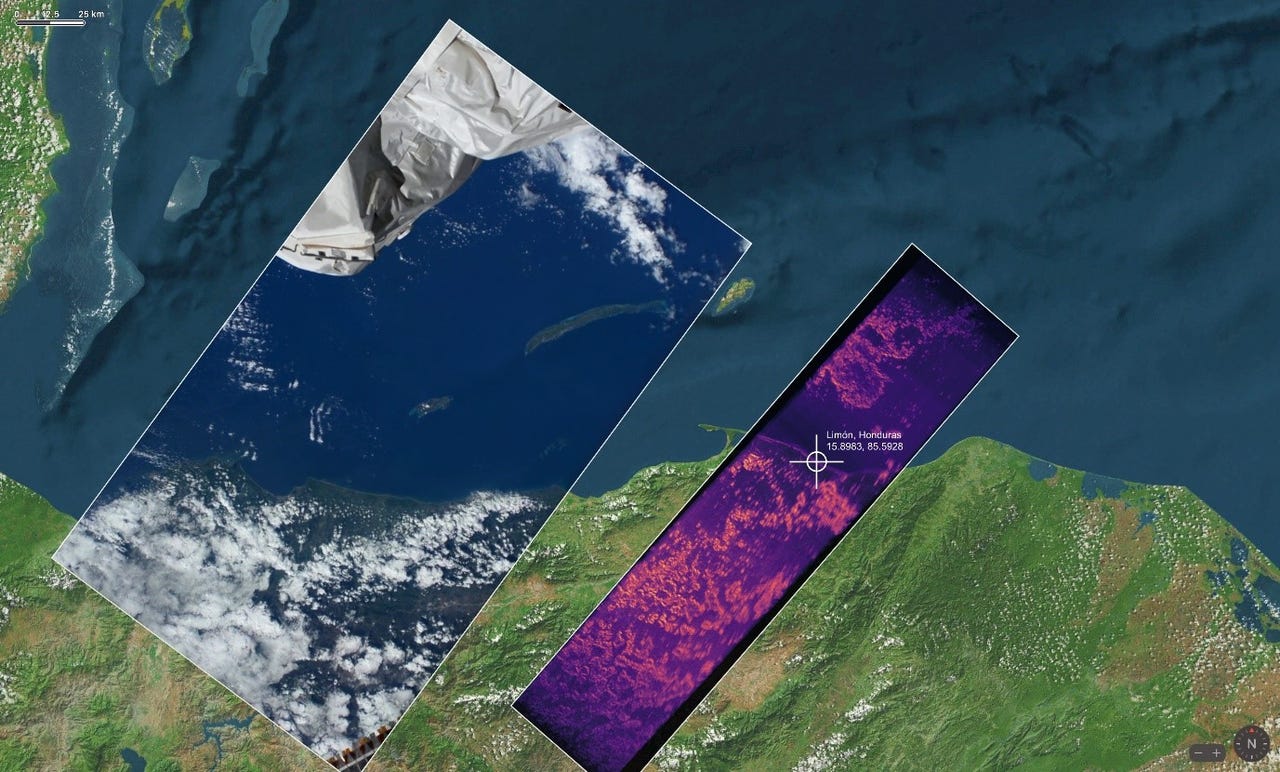Project Falcon Neuro using sensor cameras to share earth observation data from the ISS


This composite image shows the data from the neuromorphic sensors on the ISS (right) and the view from the high-definition conventional sensors on the ISS (left) as the ISS passes over the coastline of Honduras.
Western Sydney University and the United States Air Force Academy have received neuromorphic data sent from space after a pair of neuromorphic cameras were launched and installed on the International Space Station (ISS) in January.
The space-based cameras were developed by the university's International Centre for Neuromorphic Systems (ICNS), as part of a joint initiative between the two organisations called Project Falcon Neuro.
The sensor cameras were designed for earth observation and to analyse atmospheric events such as sprites, which are large electrical charges caused from thunderstorms.
According to ICNS lead research associate Professor Gregory Cohen, the cameras operate more like a biological eye than conventional cameras.
"These cameras don't take pictures, but rather sense changes and only send those when they happen. This method of sensing the visual world allows them to perform tasks that simply cannot be done with a conventional camera," he said.
"Project Falcon Neuro is the first use of these sensors for earth observation from orbit, and the data received is the first neuromorphic data to be transmitted from space."
Falcon Neuro captured data when the ISS passed over the Honduras coastline, which was later streamed back to earth and processed using algorithms developed by the ICNS.
"The result we saw from the first resolved data image was fantastic. Although it may look like a normal image when we display it, the information was collected in a completely new and novel way," Cohen said.
Looking ahead, Cohen is optimistic the cameras will play a larger role in advancing Australia's space capabilities.
"This is only the first step," he said.
"Now we know the cameras are working and operating in space, we can start using them for scientific experiments and further explore the incredible potential of these sensors and what they can do from orbit."
Meanwhile, Australian Nuclear Science and Technology Organisation (ANSTO) and Ouranos Systems, a startup based within ANSTO's innovation centre, are teaming up to develop nuclear-based power solutions for satellites and space vehicles.
Using ANSTO's infrastructure, Ouranos Systems is developing small heater units that can be installed on satellites and space probes used for lunar exploration.
Installing heater units on a satellite or probe, according to ANSTO, means space exploration instruments will last longer and carry less mass compared to batteries.
"Heating is critical to maintaining operability in such a harsh environment, such as a lunar crater," Ouranos Systems principle Robert Mardus-Hall said.
For the project, Ouranos will be responsible for selecting a radiation source, designing a pellet using numerical heat transfer and radiation-transport models, designing a ballistic casing and thermal shielding, manufacturing a prototype, testing, and logistics.
Related Coverage
- Garage inventors wanted: NASA will pay you to help transmit power on the moon
- Australian Space Agency charged with developing the nation's unified space strategy
- Elon Musk warns to use Starlink 'with caution' in Ukraine
- Russia states demands to launch OneWeb satellites as Telstra signs memo with OneWeb
- Australian Space Agency believes existing robotics can be used for terrestrial activities